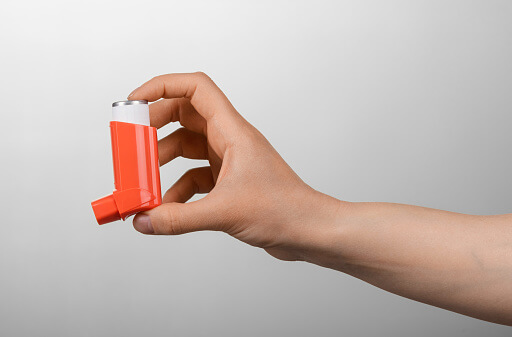
Upper back pain is a common issue that affects people of all ages, often resulting from poor posture, muscle strain, or sedentary lifestyles. While it can be debilitating, some numerous stretches and exercises can help alleviate discomfort and improve overall back health. This comprehensive guide provides detailed information on how to relieve upper back pain through stretching.
Tapaday 200 alleviates discomfort, whether it’s mild, moderate, or severe, promptly or gradually. Headaches, acute and chronic pain, and a host of other medical conditions can all find relief with this treatment. Tapaday (tapentadol) is a narcotic analgesic that you may wish to try if other painkillers haven’t worked.
Understanding Upper Back Pain
Upper back pain is typically experienced in the area between the base of the neck and the bottom of the ribcage. It can be caused by various factors, including:
- Poor Posture: Slouching or hunching over a desk can strain the muscles and ligaments in the upper back.
- Muscle Strain: Lifting heavy objects improperly or sudden movements can cause muscle strain.
- Sedentary Lifestyle: Prolonged sitting, especially without proper back support, can lead to stiffness and pain.
- Injury: Accidents or falls can damage the muscles, ligaments, or spine.
- Medical Conditions: Conditions like herniated discs, arthritis, or osteoporosis can cause upper back pain.
Importance of Stretching
Stretching plays a crucial role in alleviating upper back pain by:
- Increasing Flexibility: Regular stretching helps maintain and improve flexibility, reducing the risk of injury.
- Improving Posture: Stretching strengthens the muscles that support good posture.
- Reducing Muscle Tension: Stretching helps release tight muscles, providing relief from pain and discomfort.
- Enhancing Blood Flow: Improved circulation from stretching aids in muscle recovery and reduces inflammation.
Effective Stretches for Upper Back Pain
Here are some effective stretches that can help relieve upper back pain:
1. Cat-Cow Stretch
The Cat-Cow stretch is a gentle way to warm up and stretch the spine, improving flexibility and reducing tension.
- How to Perform:
- Start on your hands and knees in a tabletop position, with your wrists directly under your shoulders and your knees under your hips.
- Inhale, arch your back and lift your head and tailbone towards the ceiling (Cow position).
- Exhale, around your spine, tucking your chin towards your chest and your tailbone under (Cat position).
- Repeat 10-15 times, moving smoothly between the two positions.
2. Child’s Pose
Child’s Pose is a restful stretch that gently elongates the spine and relieves tension in the back.
- How to Perform:
- Start on your hands and knees.
- Sit back on your heels and stretch your arms forward, bringing your forehead to the floor.
- Hold the position for 30 seconds to 1 minute, breathing deeply.
3. Thread the Needle
This stretch targets the shoulders and upper back, helping to release tension and improve mobility.
- How to Perform:
- Start on your hands and knees in a tabletop position.
- Slide your right arm underneath your left arm, with your palm facing up, and rest your right shoulder on the ground.
- Hold the position for 20-30 seconds, then repeat on the other side.
4. Upper Back Foam Roller Stretch
Using a foam roller can help relieve tightness and improve flexibility in the upper back.
- How to Perform:
- Lie on your back with a foam roller placed horizontally under your upper back.
- Bend your knees and keep your feet flat on the floor.
- Cross your arms over your chest or place your hands behind your head.
- Gently roll up and down the upper back, pausing on tight spots for 20-30 seconds.
- Repeat for 1-2 minutes.
5. Wall Angels
Wall Angels are great for improving posture and strengthening the muscles of the upper back.
- How to Perform:
- Stand with your back against a wall, feet a few inches away from the wall.
- Press your lower back, upper back, and head against the wall.
- Raise your arms to form a “W” shape with your elbows bent.
- Slowly slide your arms up to form a “Y” shape, then back down to the “W.”
- Repeat 10-15 times.
6. Shoulder Blade Squeeze
This stretch helps to strengthen the muscles between the shoulder blades, promoting better posture.
- How to Perform:
- Sit or stand with your arms by your sides.
- Squeeze your shoulder blades together, as if you are trying to hold a pencil between them.
- Hold for 5-10 seconds, then release.
- Repeat 10-15 times.
7. Seated Spinal Twist
The Seated Spinal Twist stretches the spine, shoulders, and hips, helping to relieve tension and improve flexibility.
- How to Perform:
- Sit on the floor with your legs extended in front of you.
- Bend your right knee and place your right foot outside your left thigh.
- Place your left elbow on the outside of your right knee and twist your torso to the right.
- Hold the position for 20-30 seconds, then repeat on the other side.
8. Pectoral Stretch
Tight chest muscles can contribute to upper back pain, so stretching the pectorals is important for balance.
- How to Perform:
- Stand in a doorway with your arms forming a 90-degree angle.
- Place your forearms on the doorframe.
- Gently lean forward until you feel a stretch in your chest.
- Hold for 20-30 seconds, then release.
Tips for Effective Stretching
To get the most out of your stretching routine, keep the following tips in mind:
- Warm Up: Always warm up your muscles with light activity before stretching to prevent injury.
- Breathe Deeply: Focus on your breath, inhaling deeply as you stretch and exhaling to release tension.
- Stay Consistent: Stretch regularly, ideally daily, to maintain flexibility and prevent stiffness.
- Listen to Your Body: Avoid overstretching or pushing through pain. Stretch until you feel mild tension, not pain.
- Incorporate Movement: Combine static stretches with dynamic movements to improve the range of motion and flexibility.
Conclusion
Upper back pain can be a challenging condition to deal with, but incorporating regular stretching into your routine can provide significant relief. By performing these stretches consistently, you can improve your posture, reduce muscle tension, and enhance overall back health. Remember to listen to your body and consult a healthcare professional if you experience persistent or severe pain. With dedication and the right approach, you can alleviate upper back pain and enjoy a more comfortable and active lifestyle.





